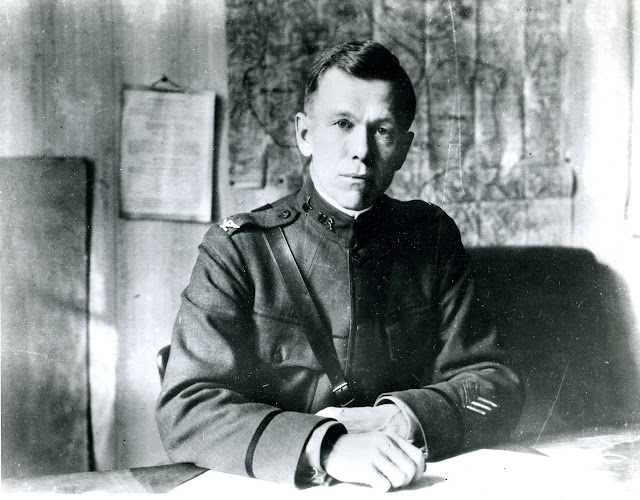On this day in 1918 the United States launched its first
full scale offensive operation as an American Army. The U.S. First Army
launched the St. Mihiel Offensive.
We've read about this a little bit already, in that the operation was the subject of an argument between Foch and Pershing. As we've noted, in our view, Pershing was wrong and Foch was right. . . the offensive that Pershing was planning had become obsolete.
The offensive that was launched was a compromise plan that Foch could accept and which left the U.S. First Army intact. It involved an offensive operation in the original direction planned by Pershing but which featured a hard right turn thereafter, incorporating somewhat of the plan envisioned by Foch. In some ways, the most remarkable aspect of the plan was the commitment to a massive redirection of forces following the offensive to which the Americans committed before it was commenced. The details for that action were the product of of the remarkable mind of George C. Marshall, then a staff officer on Pershing's staff.
American engineers during the St. Mihiel offensive.
On this day the U.S. First Army launched a threefold assault on the remaining part of the St. Mihiel Salient, which the Germans had already begun to plan to withdraw from and which they had in fact commenced to do the day prior to the assault. The Germans had occupied the area since 1914 and had densely prepared defensive positions. Attached to the U.S. Army were four French divisions in addition to fourteen American divisions. The US alone committed 550,000 men to the assault with the French contributing another 110,000. The Germans, who had already committed to withdraw from the salient, numbered only about 50,000 men in ten divisions, about half of whom would become causalities in the attack.
Air support for the assault was massive, with 1,481 aircraft committed
to it, about 40% of which were piloted by American airmen. The
remainder were British, French and Italian.
The assault, in part because of the massive disproportionate nature of the contesting forces, and in part because it caught the German army in the midst of a withdrawal, was instantly successful and exceeded expectations. Having said that, the operation was also a well planned combined arms attack and it featured the highly aggressive nature of American arms in the war which was shocking at the time. Objectives were achieved within the first two days at which it was halted in anticipation of the planned offensive at the Meuse Argonne.






No comments:
Post a Comment